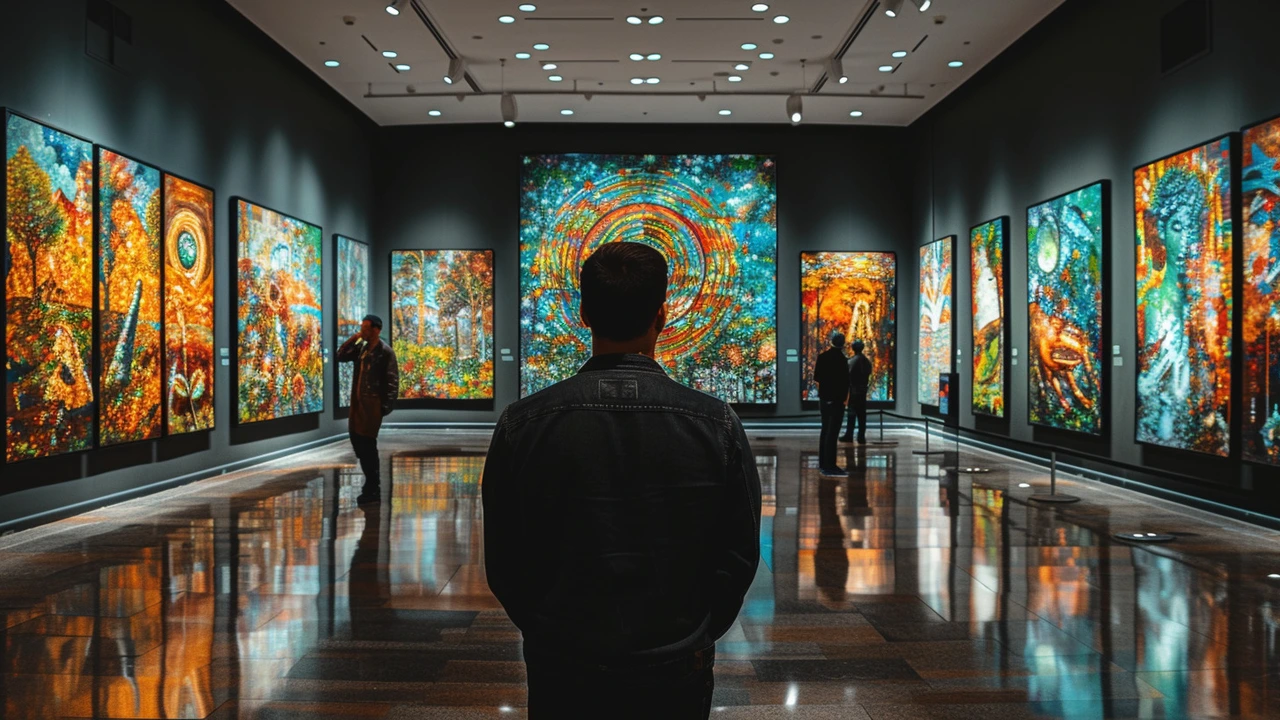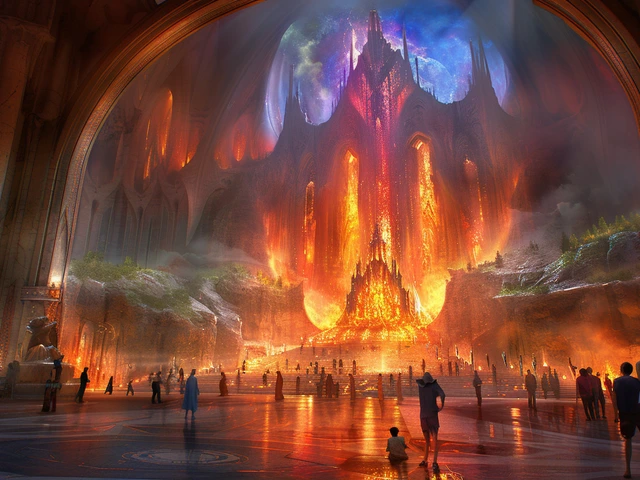The Origins and Principles of Constructivism Art
When diving into the complex symphony of movements that make up the art world, one tune that strikes a particularly unique chord is that of Constructivism Art. This movement, born from the ashes of the Russian Revolution, is where artists turned into architects of a new visual language. They believed that art should not exist for its own sake, but rather to serve a higher social function—it had to be 'constructed' from real life and in harmony with it. It's as if they decided to play a game of Jenga with the existing norms of aesthetics, and out popped a style emphasizing geometric forms, abstract beauty, and industrial materials. Ironically, now it's like a game I play with our youngsters Finn and Reuben, constructing structures of ideas (and knocking them down for fun sometimes, too!).
The Notable Figures of Constructivism Art
A stroll through a gallery of Constructivism Art is akin to walking into a party where each guest is more dynamic than the last. You've got Aleksandr Rodchenko with his camera angles that challenge your yoga poses, El Lissitzky and his PROUNs, sort of like precursors to the modern emoji; and then there's Varvara Stepanova who made textiles so vibrant you'd think her fabric came straight from a unicorn's wardrobe. Each one of these artists brought their flair to the table, or shall I say canvas? Or perhaps neither—since they probably would have preferred designing the table or manufacturing the canvas! While I'm not out there revolutionizing the art world, I've taken the same approach when redecorating the kids' room: think outside the box, or in this case, the color palette.
Characteristics of Constructivist Artworks
Imagine you walked into a world where LEGO had taken over the Statue of David—a world where simplicity triumphed over complexity. That's what delving into the characteristics of constructivism assembles in one's mind. Their artworks channel the 'less is more' vibe, with geometric shapes, industrial materials, and an all-around no-nonsense attitude towards fluff. It's art with purpose, stripped of the sentimental and the superfluous—like my attempts to cook dinner with just the essentials when Isla gently suggests that perhaps, tonight is a good night for takeout. The resulting works are so clean and efficient; they could almost double as blueprints for a life more streamlined, or a turtle habitat for Scooter that doesn't end up as a misadventure in interior design.
Constructivism's Influence on Modern Design
To say Constructivism has left its fingerprint on modern design is like saying Jazzy our parrot has a slight penchant for repeating whatever Isla and I don't want the kids to hear—understatement of the century. The sleek lines and practicality have seeped into our homes, our furniture, and even our tech devices. You can thank Constructivism art every time you admire that elegantly simple coffee machine or that chair which is more geometric puzzle than a spot for sitting. It's as if the movement whispered into the ears of every designer, "Psst, make it pretty, but also make it make sense." And just like that, the aesthetic has managed to burrow its way into the daily fabric of our lives—more pervasive than the questionable fashion choices I made back in my university days.
Debunking the Myths: Understanding Constructivism
There are more myths floating around about Constructivism than there are lost socks in our home—and trust me, that's saying something. For starters, it's not about creating robot-like, soulless pieces; it's about purity and essence. Nor is it exclusively Russian, even if that's where it started; it's as international as my attempts at cooking global cuisine (I once made a paella that was more 'pa-ayla-n't'). It's not harsh and unapproachable; it's about optimal form meeting function, kind of like when I discovered how to pack the perfect diaper bag—it was a modernist masterpiece. Understanding Constructivism is all about breaking down those barriers, which admittedly, sometimes feels like explaining to Reuben why vegetables are just as exciting as ice cream.
How to Appreciate Constructivism Art
Gaining an appreciation for Constructivism Art is akin to developing a taste for black coffee or learning to enjoy Finn's recorder concerts—acquired, yes, but absolutely worth it. First, toss aside any preconceived notions of what art 'should' look like. Next, approach these works like a detective at a crime scene, and hunt for the intent, the function behind the form. Consider the boldness, the stark lines, and the way the materials speak to the era and social commentary of the time. It's like discovering the hidden messages in Jazzy's squawks; sometimes it's gibberish, but other times, there's profound wisdom—or a spot-on imitation of Isla asking where her keys are.
Preserving Constructivism's Legacy
In a world racing towards digital art and ephemeral experiences, preserving the legacy of Constructivism Art is like trying to explain to Finn why his great-grandfather's watch is more valuable than a digital one—it's about craftsmanship and the weight of history. Celebrating this art form involves supporting galleries, educating the beansprouts among us about the movement's importance, and maybe even trying your hand at some geometric doodles. Constructivism is a precious heirloom, and holding onto its principles in the face of the contemporary tidal wave of 'post-everything' art feels somewhat like my bid to keep physical books on the shelf while tablets take over.
Contemporary Constructivism: A New Twist on an Old Classic
Just when you think Constructivism might retire gracefully into the history books, it pops back up in the contemporary scene like a grandparent at a rave—it might raise eyebrows, but it's astonishingly cool. Artists today are riffing off the original principles, injecting modern issues and technology into their creations. It's Constructivism 2.0, both a nod to the past and a text message to the future. Adopting some of these elements into the home can also bring a slice of this timeless appeal into everyday life, reminding us all that art is not just about pretty pictures—it's the visual language that can construct the world around us, as sturdy as the forts Finn and Reuben build from cushions and as surprising as Scooter's tendency to climb out of his tank to explore.



